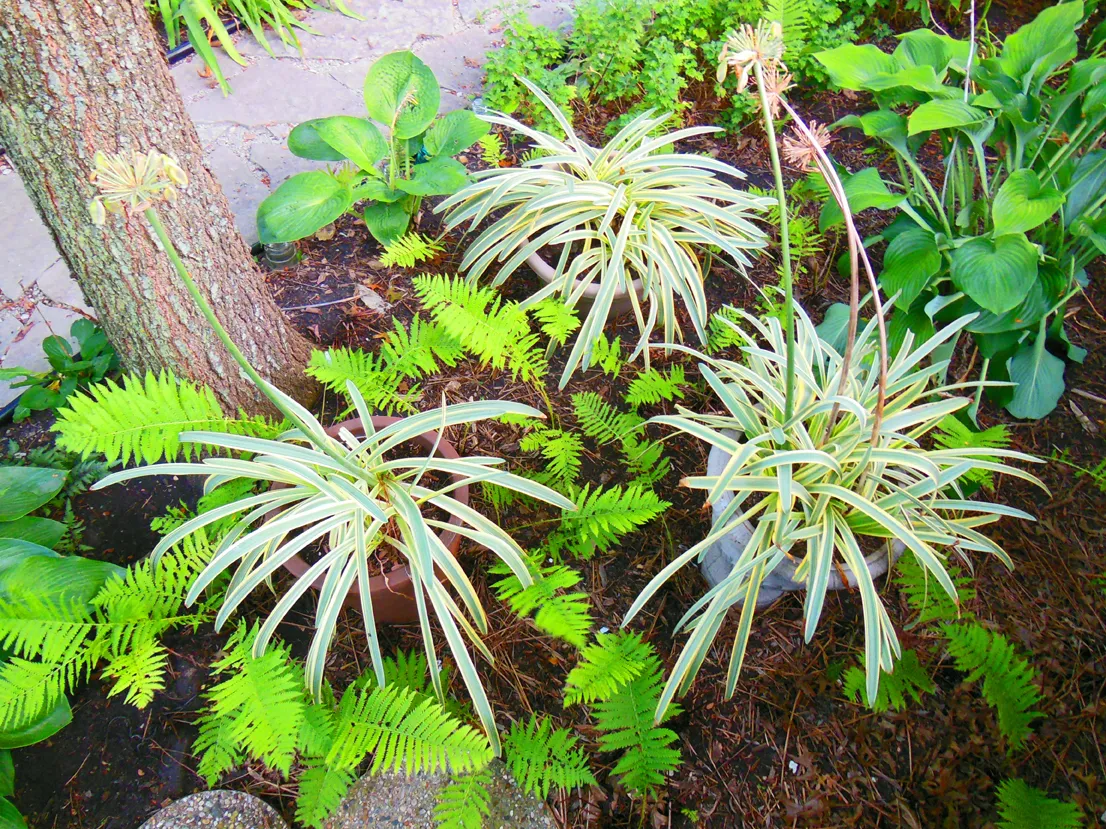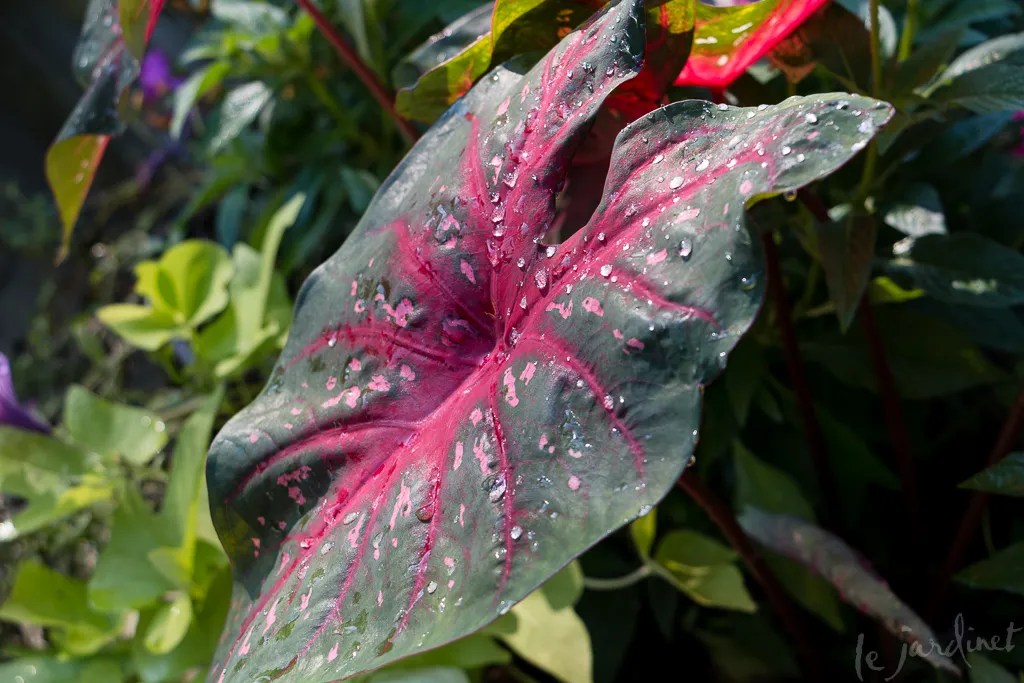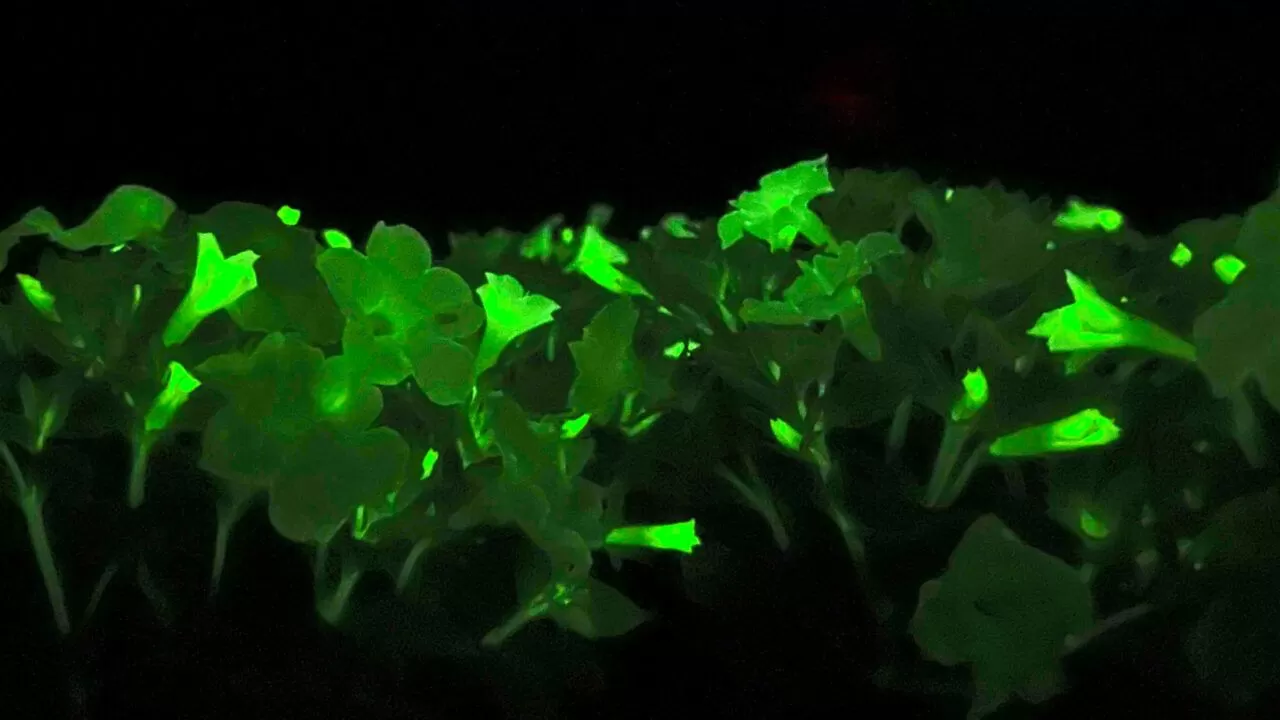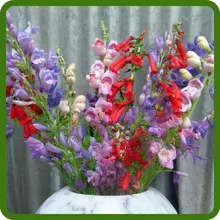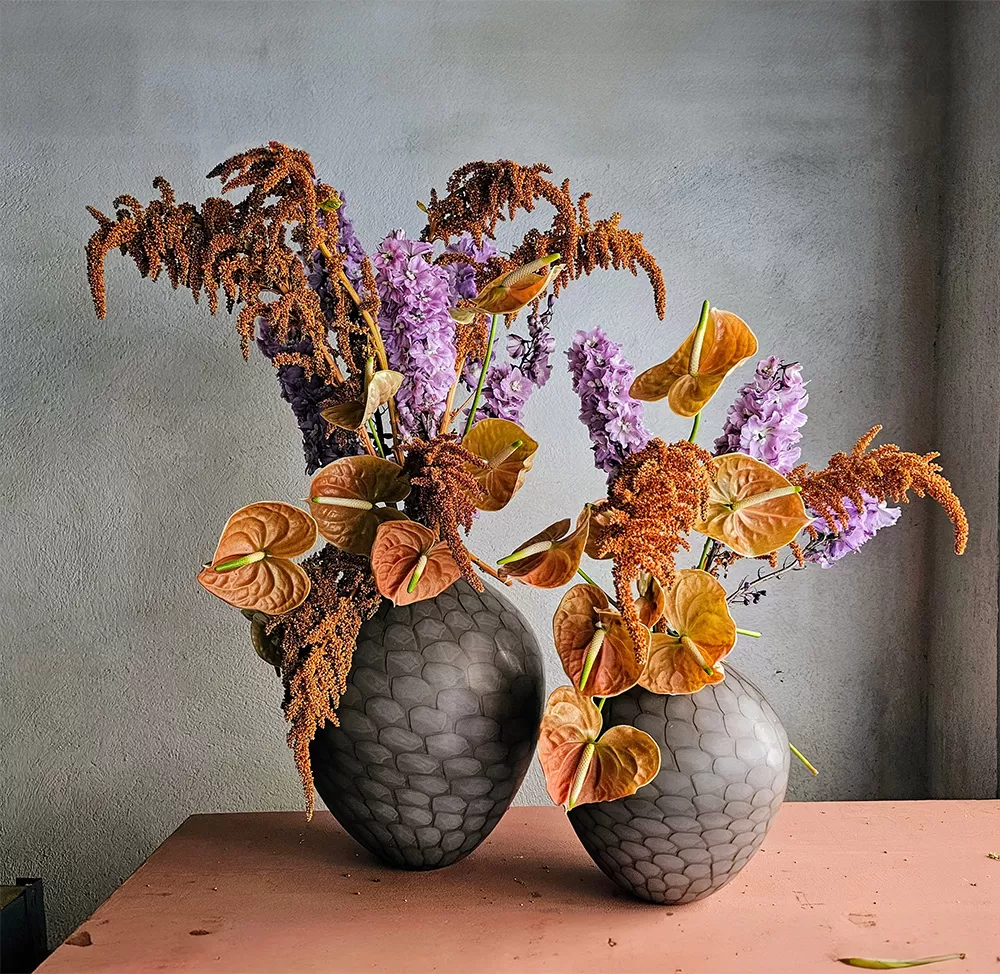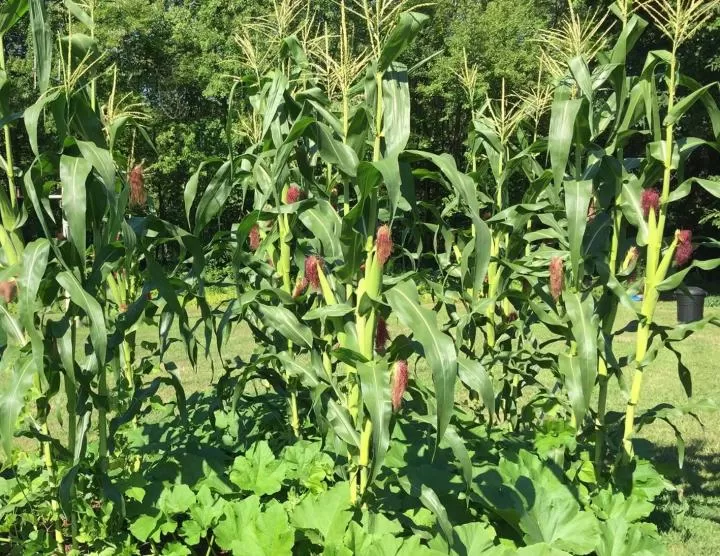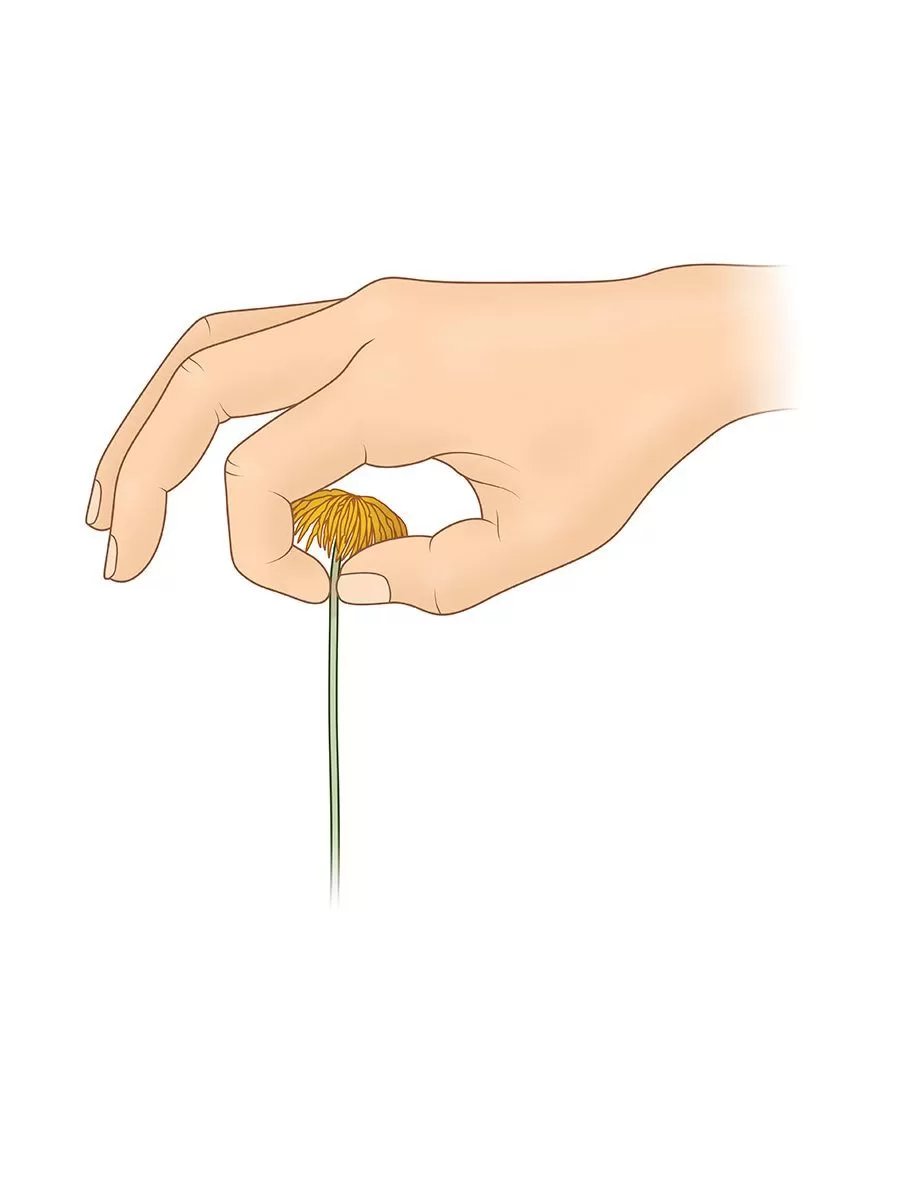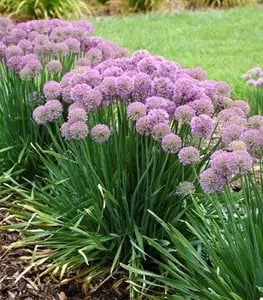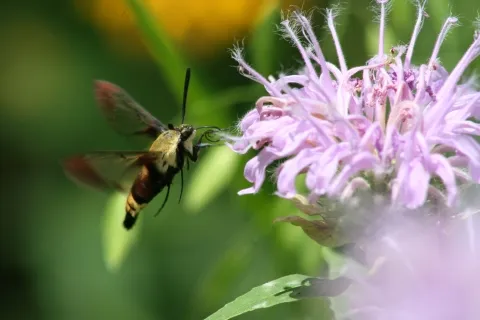- Discover the enchanting world of moon gardens that come alive after dark.
- Learn why container gardening is the perfect solution for creating a moon garden, especially in challenging climates or small spaces.
- Find out about specific fragrant and pale-blooming plants ideal for containers, including their care needs.
- Get tips on designing and caring for your captivating nighttime oasis.
Imagine stepping out as twilight descends, not into darkness, but into a softly illuminated world filled with intoxicating scents and luminous blooms. This is the magic of a moon garden, a space specifically designed to be enjoyed after the sun goes down. While traditionally planted in the ground, creating a moon garden using containers offers incredible flexibility and accessibility, making enchanting nights possible even in limited spaces or colder climates. Let’s explore how moon garden container plants can transform your evenings.
Contents
- What Makes a Garden a “Moon Garden”?
- Why Choose Containers for Your Moon Garden?
- Selecting the Best Moon Garden Container Plants
- Brugmansia (Angel’s Trumpet)
- Datura (Devil’s Trumpet)
- Moonflowers (Ipomoea alba)
- Jasmine
- Evening Scented Stock (Matthiola longipetala)
- Woodland Tobacco (Nicotiana sylvestris)
- Heliotrope
- Night Phlox ‘Midnight Candy’ (Zaluzianskya capensis)
- Scented Petunias (Old Fashioned Varieties)
- Lilies
- Designing Your Moon Garden Container Layout
- Caring for Your Container Moon Garden
- Experience the Nighttime Magic
What Makes a Garden a “Moon Garden”?
A moon garden isn’t just about plants that happen to be white. It’s a multi-sensory experience centered around the night. These gardens feature plants that:
- Bloom or release fragrance in the evening or at night.
- Often have white, pale, or silver foliage and flowers that gleam under moonlight or soft evening light.
- Engage senses beyond sight, with rich perfumes drawing you in.
They turn the often-overlooked evening hours into a special time to connect with nature, evoking memories and stirring the imagination.
Why Choose Containers for Your Moon Garden?
While a sprawling moon garden is lovely, containers offer significant advantages, especially when focusing on specific moon garden container plants:
- Portability: You can group fragrant plants right by your patio seating, porch steps, or balcony railing, ensuring the scent is exactly where you want it. Move them as needed for light, shelter, or simply to rearrange your display.
- Climate Control: Many of the most fragrant night-blooming plants are tender perennials or tropicals not suited for colder winters. Containers allow you to easily bring these plants indoors to overwinter, protecting your investment and ensuring their return year after year.
- Space Saving: Whether you have a small balcony, a tiny patio, or just a sunny corner, containers let you create a concentrated burst of nighttime magic without needing extensive garden beds.
- Soil & Drainage Control: You have complete control over the soil mix, ensuring optimal conditions for your chosen plants, and containers inherently provide good drainage, which is crucial for many species.
- Weeding Management: Container plants are far easier to manage regarding weeds compared to in-ground beds, a bonus when trying to identify desirable self-seeders amongst unwanted growth.
 A collection of potted plants creates a vibrant display perfect for a small moon garden area with seating.
A collection of potted plants creates a vibrant display perfect for a small moon garden area with seating.
Selecting the Best Moon Garden Container Plants
The original article mentions several wonderful plants suitable for enchanting nights. Here are some fantastic options, focusing on their suitability for containers and their moon garden qualities:
Brugmansia (Angel’s Trumpet)
These dramatic plants feature large, trumpet-shaped flowers that hang downwards and release a powerful, sweet fragrance in the evening. They can grow quite large, even in containers, adding a significant presence.
- Scientific Name: Brugmansia spp.
- Common Name: Angel’s Trumpet
- Zone: 7-11 (often grown as annuals or overwintered indoors in colder zones)
- Light: Full sun to partial shade (prefers protection from intense afternoon sun in hot climates)
- Humidity: Prefers high humidity
- Water: Requires consistent moisture, especially in hot weather; water deeply when the top inch of soil feels dry.
 Large, fragrant white Brugmansia blooms hang gracefully, adding drama and scent to a moon garden.
Large, fragrant white Brugmansia blooms hang gracefully, adding drama and scent to a moon garden.
Datura (Devil’s Trumpet)
With upward-facing, trumpet-shaped flowers, Datura is a prolific bloomer known for its intense evening fragrance. It often self-seeds readily, even in containers, sometimes surprisingly popping up alongside other plants. Note: All parts of Datura are poisonous.
- Scientific Name: Datura spp.
- Common Name: Devil’s Trumpet, Jimson Weed
- Zone: 5-11 (often grown as annuals from seed or self-seeds in warmer zones)
- Light: Full sun
- Humidity: Adaptable
- Water: Prefers consistent moisture but can tolerate some dryness once established.
Moonflowers (Ipomoea alba)
A vigorous vining plant perfect for climbing up a trellis in a large container, Moonflowers unfurl huge, pure white blooms as the sun sets. These impressive flowers release a lovely scent throughout the night. They thrive in heat and will bloom from late summer until frost.
- Scientific Name: Ipomoea alba
- Common Name: Moonflower, Tropical White Morning-Glory
- Zone: 9-11 (typically grown as an annual from seed in colder zones)
- Light: Full sun
- Humidity: Adaptable
- Water: Prefers consistent moisture; needs good drainage.
Jasmine
Many varieties of Jasmine offer delightful evening fragrance, often sweet and exotic. Vining types can be grown on small trellises in containers, making them easy to bring indoors for winter if needed.
- Scientific Name: Jasminum spp. (Many varieties exist with different needs)
- Common Name: Jasmine
- Zone: Varies widely by species (some tropical like J. sambac need overwintering, others like J. officinale are more cold-hardy)
- Light: Full sun to partial shade
- Humidity: Prefers moderate to high humidity
- Water: Keep soil evenly moist, reducing water slightly in winter for dormant plants.
 Delicate white Jasmine flowers bloom, filling the evening air with their beloved sweet fragrance.
Delicate white Jasmine flowers bloom, filling the evening air with their beloved sweet fragrance.
Evening Scented Stock (Matthiola longipetala)
Though the plants themselves may be unassuming or even leggy, the evening fragrance is incredibly powerful and sweet. Planting several in a container near a window or seating area ensures you capture their perfume.
- Scientific Name: Matthiola longipetala
- Common Name: Evening Scented Stock
- Zone: 7-10 (Often grown as a cool-season annual or sown directly in containers in spring)
- Light: Full sun
- Humidity: Adaptable
- Water: Prefers consistent moisture; avoid soggy conditions.
Woodland Tobacco (Nicotiana sylvestris)
Tall and stately with long, white, trumpet-shaped flowers, this Nicotiana offers a potent, exotic fragrance that attracts night pollinators. While it grows largest in the ground, it performs well in large containers, offering the flexibility to place its scent strategically.
- Scientific Name: Nicotiana sylvestris
- Common Name: Woodland Tobacco, Flowering Tobacco
- Zone: 10-11 (Often grown as an annual; may self-seed in milder climates or containers)
- Light: Full sun to partial shade
- Humidity: Adaptable
- Water: Prefers consistent moisture.
 The unique form and pale color of a Nicotiana Cranberry Isles bloom, adding subtle visual interest and potential fragrance to a container planting.
The unique form and pale color of a Nicotiana Cranberry Isles bloom, adding subtle visual interest and potential fragrance to a container planting.
Heliotrope
Known for its delightful fragrance often described as cherry pie, vanilla, or almond, Heliotrope is a compact plant perfect for the front of a container grouping. While the scent is strongest up close, massing several plants can enhance its impact.
- Scientific Name: Heliotropium arborescens
- Common Name: Heliotrope, Cherry Pie Plant
- Zone: 10-11 (Usually grown as an annual or overwintered indoors in colder zones)
- Light: Full sun
- Humidity: Prefers moderate humidity
- Water: Keep soil evenly moist; do not let it dry out completely.
 A Heliotrope plant, ‘Amaretto’ variety, displaying small clusters of fragrant flowers in a container.
A Heliotrope plant, ‘Amaretto’ variety, displaying small clusters of fragrant flowers in a container.
Night Phlox ‘Midnight Candy’ (Zaluzianskya capensis)
A smaller plant, but one with a surprisingly strong evening scent often compared to honey, marzipan, or vanilla. It’s excellent for smaller pots placed where you’ll pass by closely in the evening.
- Scientific Name: Zaluzianskya capensis
- Common Name: Night Phlox, Midnight Candy
- Zone: 9-10 (Often grown as an annual from seed)
- Light: Full sun to partial shade
- Humidity: Adaptable
- Water: Prefers consistent moisture; avoid waterlogging.
 Close-up view of small, delicate white blooms of Night Phlox ‘Midnight Candy’ in a pot.
Close-up view of small, delicate white blooms of Night Phlox ‘Midnight Candy’ in a pot.
Scented Petunias (Old Fashioned Varieties)
Unlike many modern hybrids bred for bloom size or weather resistance, older or heirloom varieties of Petunias retain a lovely sweet fragrance that is most noticeable in the evening. Look for varieties specifically listed as scented.
- Scientific Name: Petunia axillaris or hybrids
- Common Name: Petunia (Scented varieties)
- Zone: Typically grown as an annual in most climates
- Light: Full sun
- Humidity: Adaptable
- Water: Prefers consistent moisture; deadhead regularly.
 A Petunia Rainmaster plant with light-colored blooms trailing from a container.
A Petunia Rainmaster plant with light-colored blooms trailing from a container.
Lilies
While many lilies don’t bloom at night, some varieties are powerfully fragrant, and their pale colors stand out beautifully in dim light. Placing pots of fragrant lilies near seating areas contributes to the moon garden atmosphere, even if they bloom during the day.
- Scientific Name: Lilium spp. (Fragrant varieties like Oriental or Trumpet lilies)
- Common Name: Lily
- Zone: Varies by type, generally 4-9
- Light: Full sun (blooms prefer sun, but roots like shade)
- Humidity: Adaptable
- Water: Keep soil consistently moist; avoid soggy conditions.
 Multiple large white Lilies bloom in the evening light, their pale petals standing out in the garden.
Multiple large white Lilies bloom in the evening light, their pale petals standing out in the garden.
Designing Your Moon Garden Container Layout
Think about where you spend your evenings. This is where your moon garden container plants should be focused.
- Near Seating Areas: Place pots of highly fragrant plants like Brugmansia, Datura, Evening Scented Stock, or Jasmine right where you sit on your patio or porch to fully appreciate their perfume.
- Along Walkways: Line a path with containers of plants that release scent when brushed against, like some Nicotiana, creating a fragrant passage to your evening retreat.
- By Windows or Doors: Containers near an entry or window can allow evening scents to waft inside.
- Consider Height and Structure: Use taller plants like Brugmansia or Nicotiana in larger pots as focal points. Add vining plants like Moonflowers on trellises. Mix in lower-growing, fragrant plants like Heliotrope or Night Phlox around the base.
- Embrace Pale Colors: Grouping containers of white, silver, or pale-flowered plants together enhances the luminous effect in low light.
Ensure your chosen location offers the necessary sunlight during the day (most of these plants need at least 6 hours) but also provides a peaceful, relatively dark setting at night, away from competing bright lights if possible.
Caring for Your Container Moon Garden
Container gardening for a moon garden requires a little extra attention:
- Watering: Plants in pots dry out much faster than those in the ground, especially in heat and wind. Be prepared to water frequently, potentially daily or even twice daily during peak summer heat. Check the soil moisture regularly by sticking your finger an inch or two deep. Using larger pots and moisture-retentive potting mix can help.
- Feeding: Most moon garden container plants are heavy bloomers and benefit from regular feeding. Use a balanced liquid fertilizer every few weeks according to package directions.
- Overwintering: For tender perennials and tropicals (Brugmansia, tropical Jasmines, Heliotrope, etc.) in zones colder than their hardiness range, plan to bring them indoors before the first hard frost. Research the specific plant’s needs – some need a dormant, cool period, while others require bright light and warmth indoors.
- Deadheading: Removing spent blooms encourages many of these plants to produce more flowers, extending your nighttime enjoyment.
 Though often a landscape plant, the abundant blooms of Honeysuckle can contribute a powerful fragrance near a container garden area.
Though often a landscape plant, the abundant blooms of Honeysuckle can contribute a powerful fragrance near a container garden area.
Experience the Nighttime Magic
Creating a moon garden with containers is a deeply rewarding endeavor. It encourages you to slow down, step outside as day turns to night, and engage your senses in a way you might not otherwise. The intoxicating scents, the luminous beauty of the white blooms, and the accompanying sounds of the evening world offer a unique and personal connection to nature right on your doorstep.
Whether you start with just one pot of Evening Scented Stock or build a multi-container display with Angel’s Trumpets and Moonflowers, cultivating moon garden container plants will open up a new, magical dimension in your home landscape.
Step out tonight and let your container moon garden awaken your senses and your imagination.





